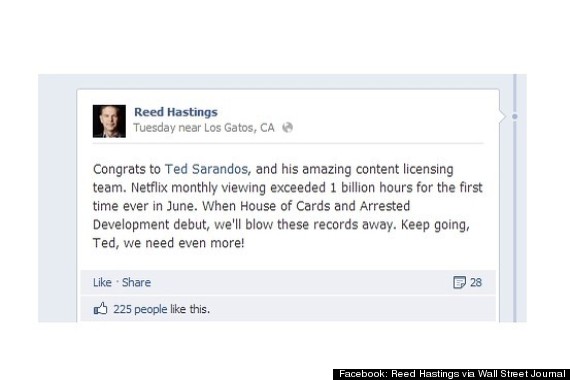Apple App Not Apt
Nowadays, people take their cellphones everywhere, to the park, to the store, to the dinner table, to the bathroom. It has become such a huge part of our lives in the past few years, and justifiably so. It's a phone, camera, music player, calendar and computer in the palm of your hand. A more recent feature is GPS. If you're lost in NYC, you pull up the Maps app. If you're driving somewhere new, you pull up the Maps app. Most of you have heard how Apple dropped the ball with iOS 6 and the new Maps app. Some people are still stranded in that park... Fortunately, Google has just launched the much anticipated Google Maps app, previously a default app for all new iPhones before iOS 6, available for free in the App Store.
The consensus is it's in fact more user friendly, accurate, and reliable than Apple's own version, and it has always been so. So one might wonder, why would Apple get rid of the previous, well-functioning Google maps in place of their own? Although Tim Cook, Apple's CEO, says they simply had their own vision of what maps should be like and it could only be done by themselves, it can be deduced that they just did not want to be associated with their highly competitive rival, Google, maker of the increasingly popular android phones. Big mistake.
Apple seems to have turned the other cheek by permitting Google to launch the new Google maps, but what it comes down to is iPhone sales, and with GPS being an integral part of daily life, it seems they understand that restricting iPhones to the Apple brand, despite how it benefits the competition, will only hurt them.
Jonathan Louie
Jonathan Louie
The SEC vs. Netflix
Back in July, Reed Hastings, the CEO of Netflix, posted a message on Facebook, which caused the SEC to warn the company last week of a potential investigation into Netflix’s violation of the Regulation Fair Disclosure. The message itself was short, consisting of only 45 words, and a simple exclamation of his excitement to see that the company has hit the milestone of 1 billion hours viewed in June (see above image).
Netflix disclosed that it received a Wells Notice from the SEC last Thursday, meaning that the SEC staff will recommend the full commission to pursue either a cease-and-desist action and/or a civil injunction. The SEC believes that Hasting’s post has violated Reg FD, the brainchild of Arthur Levitt, former chairman of the commission. The regulation was put in place slightly over a decade ago, originally designed to prevent selective leaks from companies to certain analysts and to promote “full and fair disclosure”. In general, Reg FD states that “when a public company gives material nonpublic information to anyone, the company must also public disclose that information to all investors”.
The SEC claims that by posting the fact that Netflix enjoyed over a billion hours of viewing in a month, Hastings released material information to investors and he did so through an unknown and non-public venue to release important company news. However, Hastings argues that, first of all, the information was non-material, especially since interested parties, viewers of the site, and the general public had known previously that the company was close to this milestone. As to the second part of the SEC’s claim, questioning the public nature of Facebook seems almost comical, especially when Hastings has over 220,000 followers and this post probably reached a lot more people than an SEC filing. However, the SEC might have a point in saying that Netflix did not alert its investors that Facebook was an available channel for information.
Currently, the sentiment both on the Street and online is that the SEC is over-reacting and its silly fetish of trying to control companies and their disclosure methods needs to be adjusted and updated to fit the latest trend in the rise of social media. This case still has a long way to go, and it may lead to an evolution of the SEC into a more modern governing body.
- Jennifer Zhang
Big Data Big Money
 What the internet has done to social media will be talked about for the next hundred years, as it has changed the game for so many industries, especially advertising. Take Facebook for example. Everyone has one. Okay, not everyone, but about a sixth of the entire population (1 billion people) are active users, which one can leave up to the imagination the number of people who have simply used Facebook once in their life.
What the internet has done to social media will be talked about for the next hundred years, as it has changed the game for so many industries, especially advertising. Take Facebook for example. Everyone has one. Okay, not everyone, but about a sixth of the entire population (1 billion people) are active users, which one can leave up to the imagination the number of people who have simply used Facebook once in their life. Facebook users post all types of information on their profile, from photos, personal information, relationship statuses, school, and location, also known as Big Data. To any consumer targeted business such as retail or advertising, this information a goldmine, as they are only a couple clicks away from obtaining information from a billion people. From photos for example, you can see that Person A has recently posted pictures of his snowboarding trip in the Swiss Alps. If companies could obtain this information, stores such as Dick’s Sporting Goods could specifically display ads related to snowboard equipment or discounts, and even airlines can post cheap tickets to other popular snowboard sites.
The popular TV show Mad Men depicts scotch drinking, heavy smoking advertising kings who utilized their creativity to come up with the best advertisements. 50 years later today, all advertising companies need is access to this data so that they no longer create blanket advertisements singling out a specific demographic, but create advertisements actually single out specific people. Moreover, the number of clicks on any ad can be specifically monitored to track its success in real-time.
While all of this sounds like a hop, skip, and a jump towards profit, there are some issues that arise such as correctly sifting through data, and privacy. The former is the difficulty associated with knowing exactly what’s relevant to said company, and the latter is more of a moral issue, which is why I said “if companies could obtain this information.” I know I personally wouldn’t want firms snooping around my profile and looking at my pictures, regardless of how much I save on product X.
Jonathan Louie
10 Year Treasuries Trade in Tightest Range Since July on Fed Speculation
What seems to be somewhat of a surprise recently is the fact that US treasuries are trading at their tightest ranges since July, which most believe is due to Fed speculation. 10 year US treasuries have been trading within a quarter percent point, a record low, as potential forecasted job growth failed. This is leading to speculation that the Federal Reserve will, as a part of QE3, announce another round of bond purchases and further increase their balance sheet. Yields on the 10-year treasury note benchmarks have risen from the least in more than 2 weeks after the United States Labor department showed figures that the US has added approximately 146,000 jobs in November, causing the unemployment rate to drop to 7.7 percent. Federal Reserve officials have expressed that they will continue to buy bonds until the job market improves greatly. Industry leaders expect easing to continue, guaranteeing that we will “see more balance sheet operations,” expecting the Fed to continue to be “hyper active.”
Hedge fund managers and other speculators have increased their long positions in 10-year treasury notes according to the US Commodity Futures Trading Commission according to recent data. As expected, volatility in these treasuries dropped further this week to the smallest value in over 5 years. Bank of America’s volatility index, the MOVE, touched just 51 basis points on Dec 3, the lowest it’s been since April 1988. Looking at all these numbers, the obvious question that follows, especially to us students is – who cares? In all actuality, this is a great sign for the Untied States economy. What these numbers demonstrate, and what can be seen in the market, is a sense of stability. The volatility that has been plaguing out economy over the last year and a half is finally leveling off. Confidence in the markets, it seems, has finally been restored.
- Vivek Shah
Foreign Retailers Poised to Enter Indian Market
The lower house of India’s parliament, the Lok Sabha, today voted to allow foreign supermarkets to conduct business in India. The Congress Party backed government managed to push the measure through, after to minority parties abstained from voting. India badly needs Foreign Direct Investment (FDI) as its once booming economy has slowed to around 5.5% percent growth in GDP and is suffering from high inflation.
The move to open the retail sector to foreign investors was first approved in September, and did not need parliamentary approval. However in the face of opposition protests, Indian Prime Minister Manmohan Singh decided to put the measure to vote in both houses of parliament. The vote passed with 253 members for and 218 against while 74 abstained. The measure has been largely contended because many believe that it will put many small stores out of business. However, the passage of the measure in the lower house raises hopes that it can also be passed in the upper house, where it faces a tougher challenge.
Allowing foreign retailers would enable the likes of Wal-Mart, Tesco, and Carrefour to enter the market. India’s retail sector is expected to grow to $725 billion by 2017. The entry of supermarkets would greatly change India’s retail sector, which has traditionally been dominated by small owner manned shops.
The government and many economists applauded the vote, believing that investments made by foreign retailers would bring much needed capital into the economy. Under heavy pressure due to high inflation, the rupee has fallen 18% against the dollar. Foreign retailers could also help improve India’s supply chain, where many agricultural products spoil before they can reach the market. India’s SENSEX stock index increased by 0.2% to 19391.86, a 19-month high, riding investor confidence that the measure will pass through the upper house of parliament as well.
-Ashish Sathe
Cash-Trapped Companies
Recently, we’ve heard a lot about companies holding excess cash on their balance sheets. Many claim that if these companies invested some of the cash they’re been hoarding, the US economy would get the boost it needs. Ironically, even though American companies currently hold near record amounts of cash, many of them are “cash poor” in the US. This is because a majority of their cash is trapped in foreign countries, mainly in Europe and Asia. The list of companies with cash aboard is extensive and includes some major US companies such as Johnson & Johnson, GE, Whirlpool and Microsoft.
So why can’t they just bring the cash back to the US? This mainly has to do with the fact that these companies would incur a 35 percent tax rate on corporate profits from the cash they bring back. A recent WSJ article mentioned the company Emerson Electric, which holds almost $2 billion in cash abroad, has only been able to bring back $500 million to the US. This meant that the company had to resort to borrowing money in the US for share buybacks, to pay out dividends and even to pay its taxes. This impact is being seen on many American companies that claim they would gladly bring more cash holdings back to the US if the effect of taxes were minimized. They state that being able to move their funds back will definitely boost capital spending in the US and help improve the job market. The Obama administration is proposing a lower tax rate, but a solid plan has yet to be developed.
-Ritika Gawande
Photo Credit: http://tedfreeway.com/2010/10/26/trapped-overseas-billions-could-be-stranded-waiting-to-return/
Let's go get us another W!
Wow! What can I say about this week. It was a great win at Santa Clara. It was one of the craziest games I have ever been a part of. They are a really good team and it was a battle the entire way. I was proud of all the guys for never giving in as every one of us contributed to the win. It was great to finally be on the road with the guys and it is always a good chance to bond with each other. You only have each other when you’re in someone else's gym and you have to stick together to come out on top. We did a good job of that and now we have our second road game of the year against another good team. I can’t stop thinking about that game and some of the highlights. I had a great view of Kyisean’s monster dunk and Preston’s unbelievable three to tie the game. Jordan Stone also made some clutch free throws, and through some mistakes and adversity, we came out on top. It’s good to get a road win like that win at Santa Clara but we cannot relax because we have bigger plans than winning one game. This week of practice is going to be very important and we need to get better everyday. It was a great first road trip to start the season, now lets go get us another W!
Losses to Autonomy and the Unending Nightmare for H-P
While the news broke surrounding Hewlett Packard’s sudden write-down of its November 2011 acquisition of Autonomy nearly two weeks ago, developments continue to plague H-P as it settles this mammoth blunder.
On November 20th, H-P’s stock went tumbling 12% as the company announced a massive $8.8B write-down, primarily tied to its acquisition of Autonomy. H-P directly accused Autonomy of "serious accounting improprieties, disclosure failures and outright misrepresentations". The Founder of Autonomy, Michael Lynch, has openly rejected these accusations, and has gone as far as sending an open letter to H-P’s board asking for an explanation of what these supposed “accounting improprieties” are.
Unfortunately, the write-down of Autonomy is only the most recent in a slieu of problems that have been plaguing H-P as the stock has fallen over 50% this year, amid management turnover, decreased product demand, and growing debt.
While it might seem permissible for a company to have large write-downs in the case of accounting misrepresentations, too many flags have been thrown to look at this as a one-sided mistake. The market was openly pessimistic about H-P’s acquisition from the beginning. From the time H-P announced the Autonomy acquisition to the time the deal was completed, H-P’s market capitalization dropped $15B from $58.5B to $43.5B. Additionally, H-P’s share price drop of 12% on the $8.8B write-down announcement represented a $3B drop in the company’s market capitalization, implying that the market had already priced in a $5.5B loss.
One of the most appalling details about the Autonomy write-down is the uncanny resemblance of the acquisition write-down to the original acquisition premium. H-P originally paid a $5.2B acquisition premium on Autonomy back in 2011. Now it has made a $5B write-down on that original acquisition ($3.8B of the original $8.8B write-down was not due to Autonomy).
A year after H-P’s acquisition, the company has written down nearly the entirety of its original acquisition premium. Even if Autonomy is guilty of the accounting misrepresentation it is accused of, can anyone really find H-P free of blame?
-Kyle Cameron
Mustangs down Blues
 |
| Tony Spiridis in action vs U of T |
Bethany Wood - Mustangs Athletics
LONDON, Ont. - The Western Mustangs men’s basketball team is back in business.
After a slow start to the season, Western came into tonight’s game looking for its first win of the season and earned it convincingly over the Toronto Varsity Blues. Four Mustang players had double-digit scorings and second-year, London native Greg Morrow contributed a team-high 21 points for the decisive 81-72 victory.
The home team maintained consistency with a 48.5% field goal percentage, garnering 30 points from the three-point line. The Blues maintained a high free throw rate, but fell to the Mustangs’ 39 team rebounds, limiting the team’s second chance scoring opportunities.
Morrow hit nothing but net with back-to-back three pointers in the first quarter to give Western a five-point lead off the bat. Teammate Quinn Henderson added two key points off his own rebound, while second-year Ryan Higgins subbed in to add another three off the short side. The 11-6 lead drove Toronto to a time out.
Fifth-year Blues veteran Arun Kumar stepped up to close up the gap; the Hamilton, Ontario native made two free throws and an impressive drive for two points. Ben Garvin followed up with a three pointer and lay up to close the lead, putting the Blues up 15-14. Western took a subsequent time out and used the pause to regain a 21-17 lead after the first quarter.
The Mustangs captivated the court in the second. Team scoring leader Peter Scholtes – ranked in the OUA top 20 thus far this season – got his feet under him, adding eight points and six rebounds. Morrow followed up, sinking 86% of his shots with aggressive, give-and-go play. Rookie George Johnson capitalized on a turnover chance with a key three pointer, while second year teammate Charles Drouin was a force on the backcourt with four rebounds. The full-court chemistry from the Stangs drove the team’s lead to 13 at the half – 42-29 – out-rebounding its opponents 19-12 on defense.
The Blues returned to the court with vengeance and went on a six-point scoring streak in the third, led by Matt Savel. The third-year guard drove to the boards and drew a penalty for a three-point play. The action went back and forth and Mustang Henderson added a pair of points to keep Western’s lead at nine. The Blues responded with two key three pointers in an attempt to tighten the scoring deficit.
Western rookies Anthony Spiridis and Jack Daneyko saw the court, while second-year Higgins stepped up with two three pointers and aggressive play on the backboard to maintain Western’s decisive lead, up 61-48 after the third quarter.
Toronto regrouped for a fight to the finish. The Blues struggled with team chemistry and foul trouble, but team leader Alex Hill – a top 10 OUA scorer – pressed hard to the boards for six straight points, tightening the gap to five and drew a Western time out. Hill and teammate Adam Plummer worked the court to find chances, but few turned to scoring opportunities.
Despite being outshot 24-20 by the Blues in the fourth quarter, Morrow and Scholtes’ experience paid off in the final minutes to draw a sequence of Toronto fouls, securing the 81-72 win.
The Blues fall to below .500 and head back to the drawing board for the team’s next game at Athletic Centre Sports Gym versus McMaster, while the Mustangs take the confidence from tonight’s win to Alumni Hall again tomorrow night.
Western (now 1-4 for the season) will take on the Ryerson Rams – ranked first in the OUA East, undefeated so far 4-0 – on Saturday, November 24. Tip off is at 8:00pm, with live coverage from MustangsTV on the SSN Canada website.
Drama/Action/Adventure/Horror/Comedy/Sci-Fi/Fantasy/Mystery/Thriller: NEWLY ADDED 07.20.13 - MOVIE POST REFRESHED OR UPDATED 07.23.13
Improve Your Video-Watching Experience. CLICK HERE to learn how.
Please help keep this movie blog run smoothly, by reporting dead links. (For faster replies and fixes on dead links, please leave comments in the Guest Book.)












(((SEE MORE ACTION)))
Carleton offense takes down Mustangs at Alumni Hall
Brant Morwald - Mustangs Athletics
11/11/2012 1:54:00 PM
The Western Mustangs men's basketball team faced a very tough Carleton squad last night in their second home game of the regular season. The game provided the young Mustang team with the experience necessary to move forward in development. The Mustangs struggled to find offensive rhythm and fell short to the Carleton Ravens -- ranked first in the OUA -- with a final score of 46-86.
Western started out aggressive in the first quarter and worked excellent as a team. The Stangs displayed excellent off ball movement creating offensive opportunities. Peter Scholtes created plays with precise passing as Greg Morrow finished in the paint, finishing with 14 points overall. Western shut down Carleton defensively, forcing turnovers and rotating effectively.
Morrow continued to energize the Mustang squad with a coast-to-coast layup four minutes into the game. Toward the end of the first quarter, Carleton amplified their defensive pressure moving to a full court press. This brought the Ravens to within one point and the first quarter ended with a score of 19-18 in favour of the Mustangs.
In the second quarter, Scholtes exhibited his strength and played well in the post. Soon, the veteran Carleton team found its touch and began to make outside shots. The Mustangs did not back down, diving to the floor for loose balls and fighting for rebounds. It was the three point shooting from Carleton that increased the margin as Western was unable to find a way to silence their shooters. Western struggled to rotate effectively in the second quarter, allowing for Carleton to score 18 consecutive points from beyond three point range.
The first half ended with a score of 26-40 in favour of the Ravens.
The Mustangs knew that they needed to change their approach in order to overcome the second quarter deficit. Western struggled to find its touch, dropping in scoring percentages from both the two and three point distances. Raven Thomas Scrubb lead the way with seven rebounds, and he along with three teammates Tyson Hinz, Philip Scrubb, and Gavin Resch reached double digit scoring. Hinz made 7 for 7 field goal chances and followed up with a huge three pointer in the third.
Western fought hard for rebounds but struggled to get possession of the ball. Carleton controlled the pace of play in the second half. The third quarter ended with a score of 37-72.
Western was resilient and came out strong in the fourth quarter. The team worked hard to get an offense running smoothly and creating many scoring opportunities. A great three pointer from Ryan Higgins sparked energy in the home team squad. Tough full court pressure from Carleton forced unnecessary turnovers, which left Western's final effort short to overcome the consistency of the veteran Raven team.
“We had a good first half but got killed on the boards. We closed out poorly,” Mustang forward Morrow said. “It was all about rebounding this game and they sent all four guys to the glass. If we see them in the future, we need to be more physical on the boards.”
Mustangs Morrow and Scholtes managed double digits on the scoreboard, Morrow leading the way with 14 points in 38 minutes played. Scholtes was on the court for over half of the game as well, but only made four of 12 field goal opportunities in the one-sided court play, in favour of Carleton.
The team regroups for an away trip versus York on November 16 at Tait MacKenzie Gymnasium, followed by a matchup against Laurentian at Ben F. Avery Gymnasium on November 17. Tip off for both games is at 8pm.
The Mustangs return to Alumni Hall on November 23 versus Toronto
Western started out aggressive in the first quarter and worked excellent as a team. The Stangs displayed excellent off ball movement creating offensive opportunities. Peter Scholtes created plays with precise passing as Greg Morrow finished in the paint, finishing with 14 points overall. Western shut down Carleton defensively, forcing turnovers and rotating effectively.
Morrow continued to energize the Mustang squad with a coast-to-coast layup four minutes into the game. Toward the end of the first quarter, Carleton amplified their defensive pressure moving to a full court press. This brought the Ravens to within one point and the first quarter ended with a score of 19-18 in favour of the Mustangs.
In the second quarter, Scholtes exhibited his strength and played well in the post. Soon, the veteran Carleton team found its touch and began to make outside shots. The Mustangs did not back down, diving to the floor for loose balls and fighting for rebounds. It was the three point shooting from Carleton that increased the margin as Western was unable to find a way to silence their shooters. Western struggled to rotate effectively in the second quarter, allowing for Carleton to score 18 consecutive points from beyond three point range.
The first half ended with a score of 26-40 in favour of the Ravens.
The Mustangs knew that they needed to change their approach in order to overcome the second quarter deficit. Western struggled to find its touch, dropping in scoring percentages from both the two and three point distances. Raven Thomas Scrubb lead the way with seven rebounds, and he along with three teammates Tyson Hinz, Philip Scrubb, and Gavin Resch reached double digit scoring. Hinz made 7 for 7 field goal chances and followed up with a huge three pointer in the third.
Western fought hard for rebounds but struggled to get possession of the ball. Carleton controlled the pace of play in the second half. The third quarter ended with a score of 37-72.
Western was resilient and came out strong in the fourth quarter. The team worked hard to get an offense running smoothly and creating many scoring opportunities. A great three pointer from Ryan Higgins sparked energy in the home team squad. Tough full court pressure from Carleton forced unnecessary turnovers, which left Western's final effort short to overcome the consistency of the veteran Raven team.
“We had a good first half but got killed on the boards. We closed out poorly,” Mustang forward Morrow said. “It was all about rebounding this game and they sent all four guys to the glass. If we see them in the future, we need to be more physical on the boards.”
Mustangs Morrow and Scholtes managed double digits on the scoreboard, Morrow leading the way with 14 points in 38 minutes played. Scholtes was on the court for over half of the game as well, but only made four of 12 field goal opportunities in the one-sided court play, in favour of Carleton.
The team regroups for an away trip versus York on November 16 at Tait MacKenzie Gymnasium, followed by a matchup against Laurentian at Ben F. Avery Gymnasium on November 17. Tip off for both games is at 8pm.
The Mustangs return to Alumni Hall on November 23 versus Toronto
Subscribe to:
Posts (Atom)





.jpeg)
























